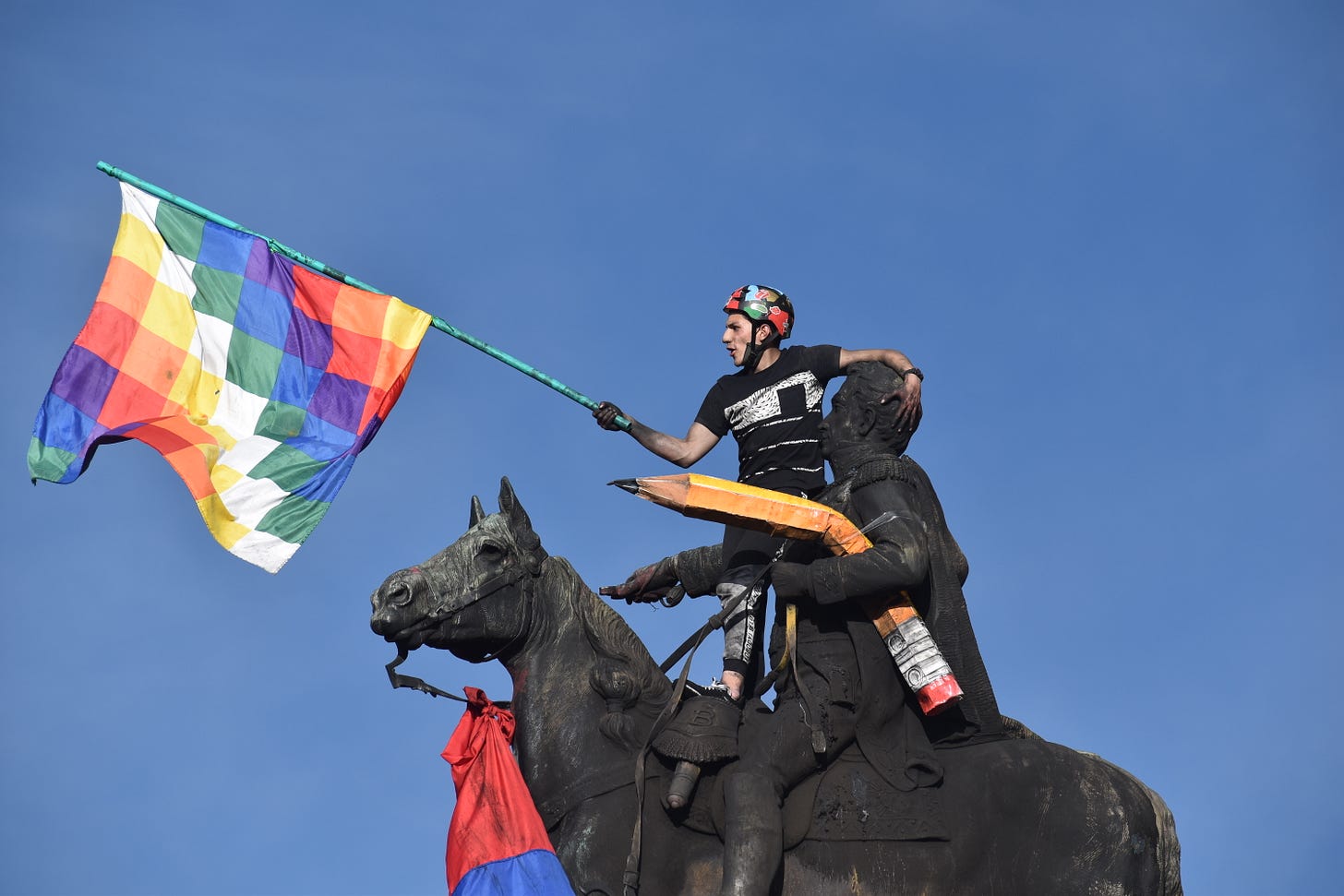A Love Letter to two Colombias
The peace may be strained, but civil society is growing. It is a hopeful moment for real Democracy
Tens of thousands of students had marched down one of the main highways in Bogotá, forcing police to divert traffic. To call it a march is misleading however. It was a magical dance of infinite colors— acrobats accompanied by thousands of flags of all colors, musicians, drummers, and even giant puppets somersaulted down car lanes normally clogged by traffic. Costumed revelers carried signs calling for peace, or denouncing military massacres. A group of students manipulated a giant marionette of the grim reaper: it towered over the chanting crowd. Painted on its chest were the words “false positives”.
It wasn’t a march— it was a beautiful, chaotic, gordian-knot of unstoppable dancing force.
An hour later, it dissolved into riots after ESMAD, the infamous Colombian riot police responsible for scores of protester deaths, attacked the crowd with clubs, tear gas and flashbang grenades.
It was 2019, the first day of a National Strike in which 17-year-old Dilan Cruz and nearly a dozen others would be killed by police. It was Colombia distilled into one moment: state violence versus the infinite power of an unspeakably diverse and beautiful technicolor culture. I didn’t know it at the time, but I was watching the growing pains of real democracy. It was also one of thousands of such moments that, in retrospect, heralded the beginning of the end of “Uribismo”, the right-wing movement named after and led by ex-president Álvaro Uribe which ruled the country for 24 years.


